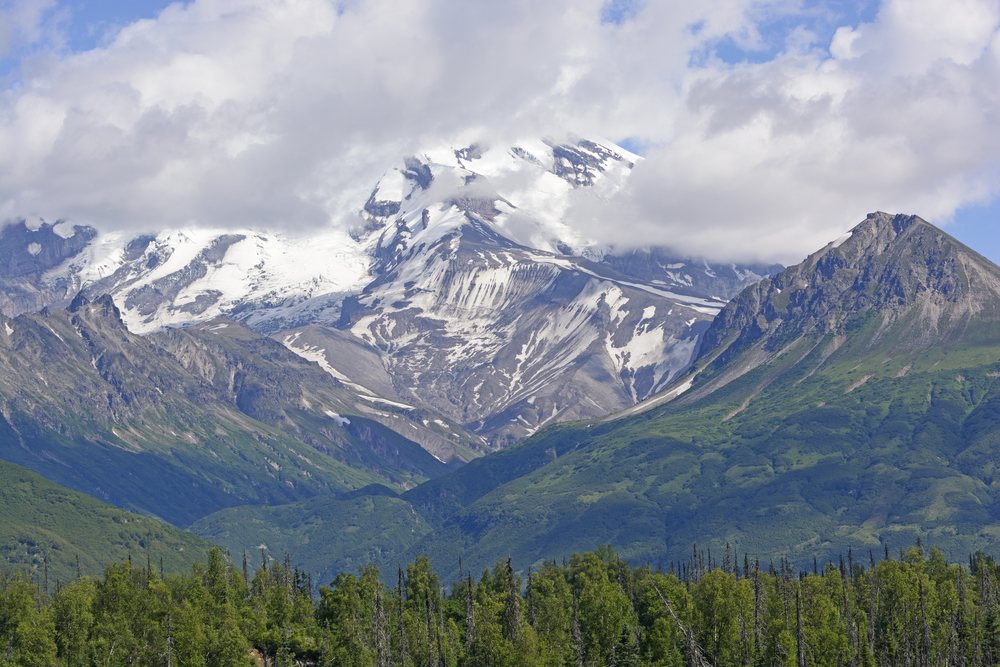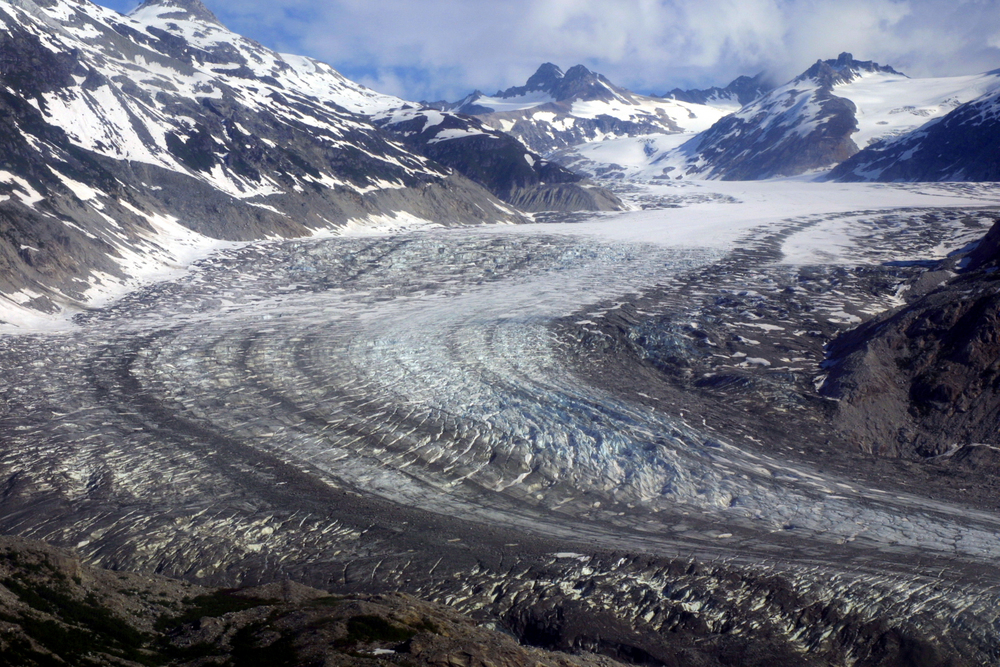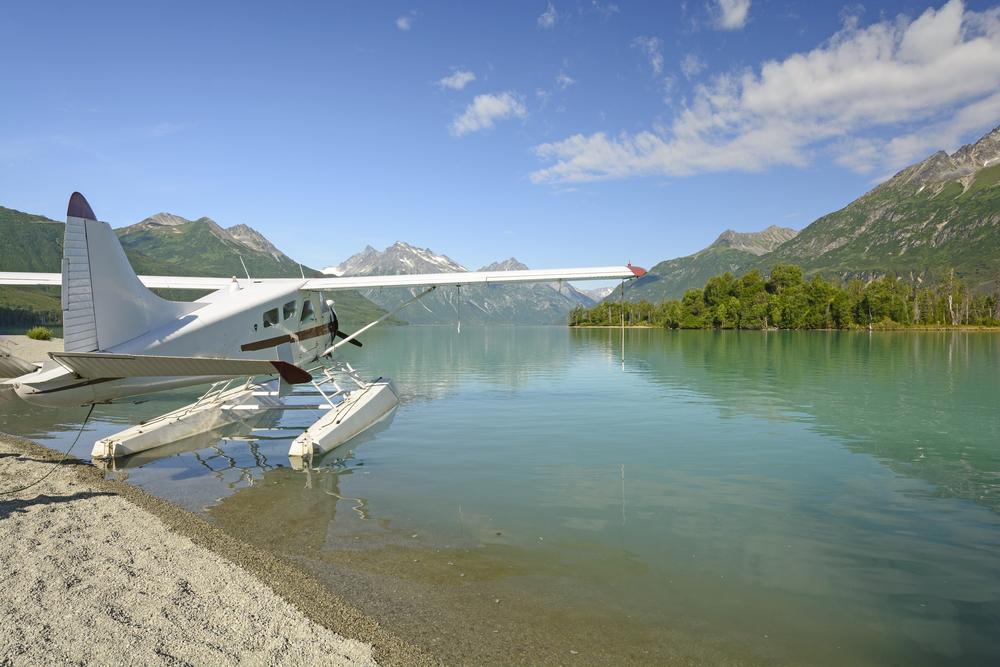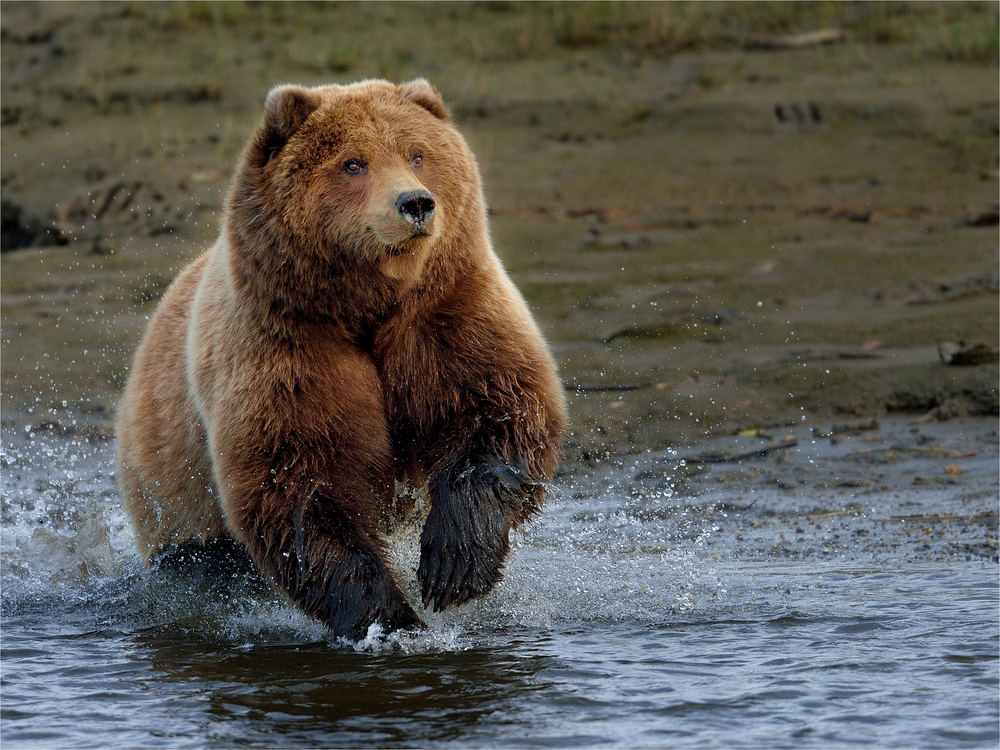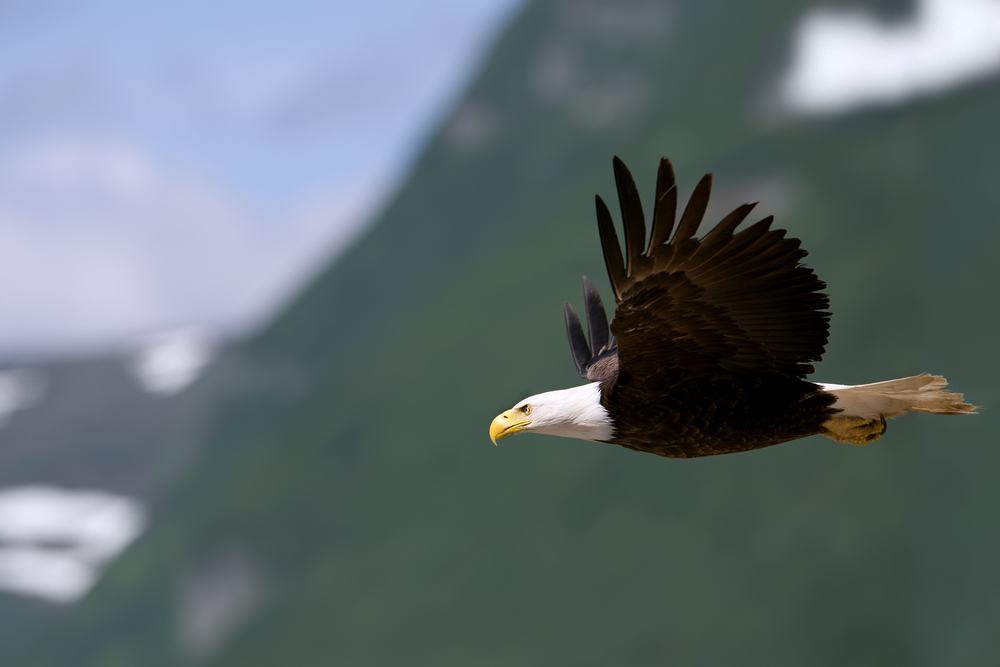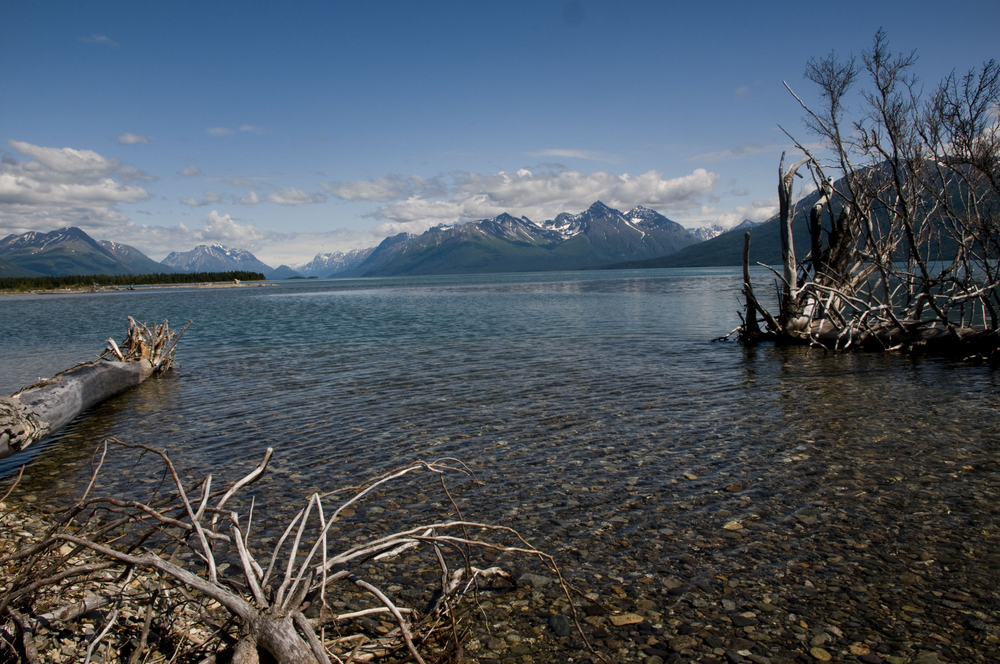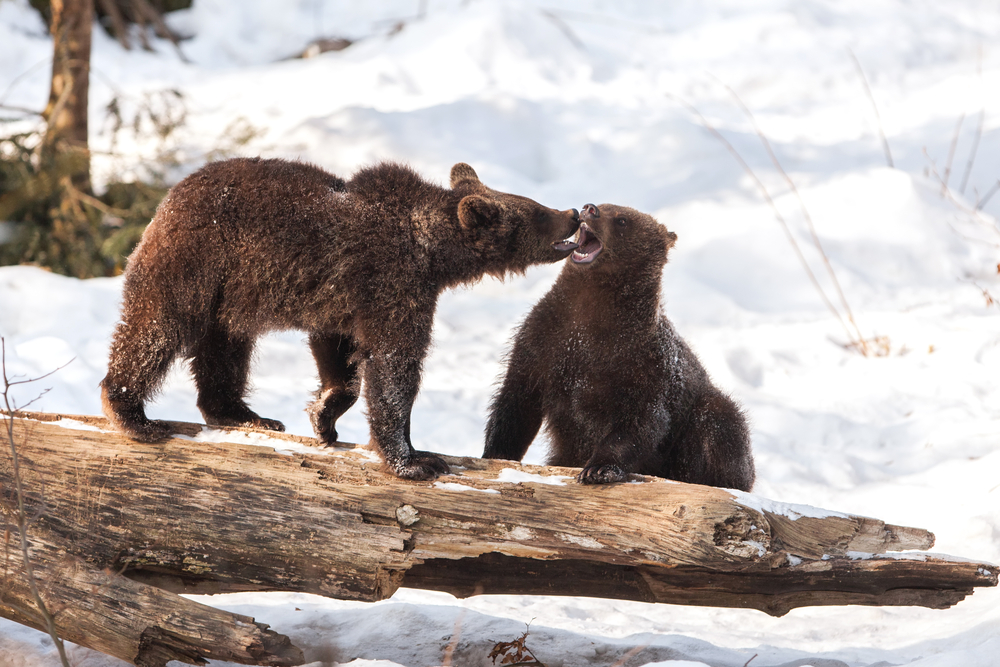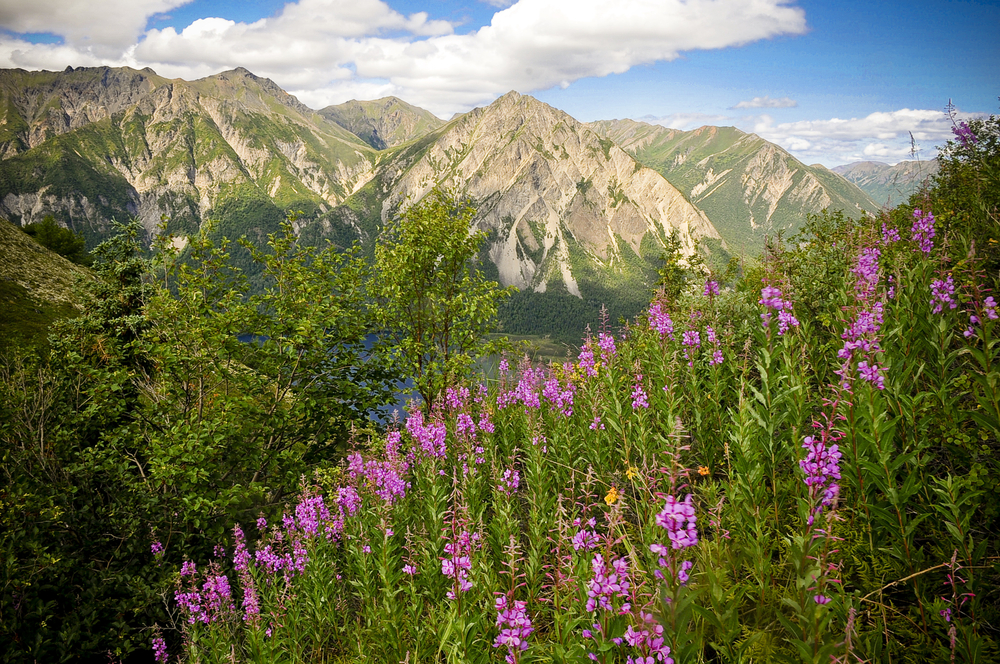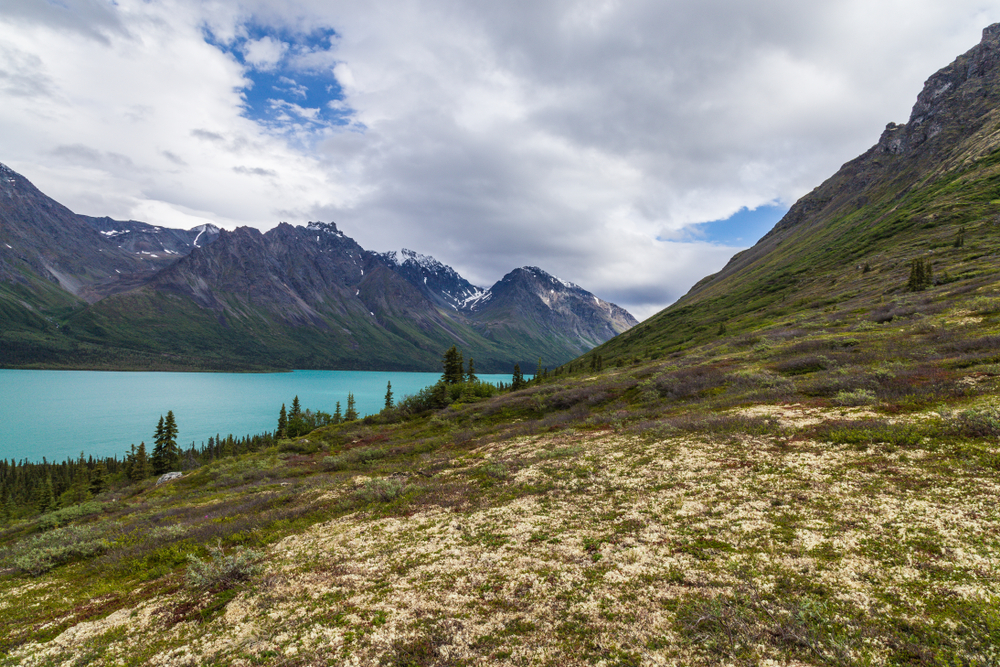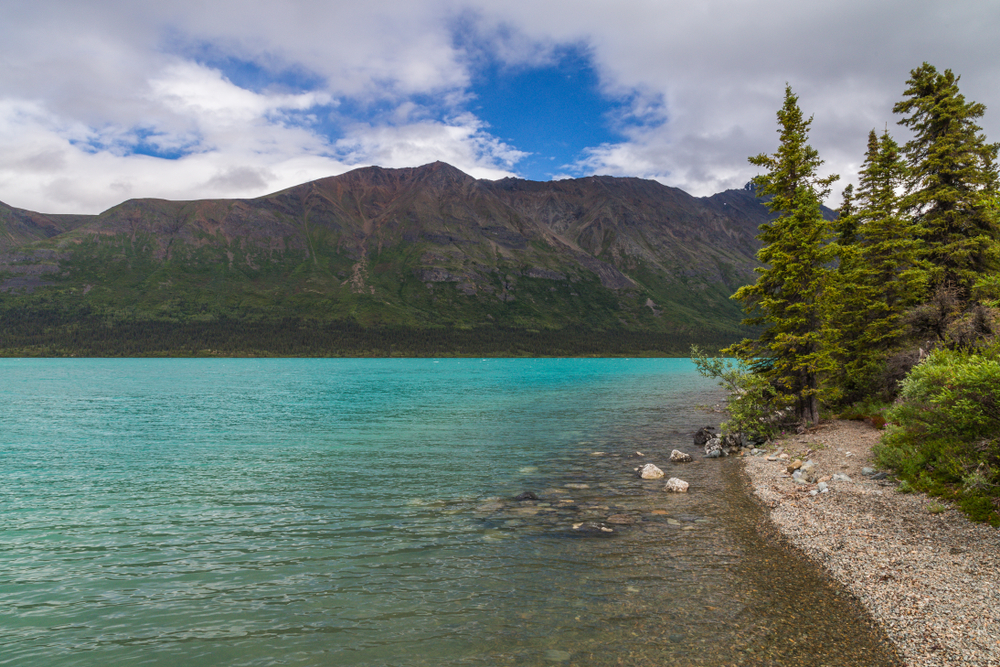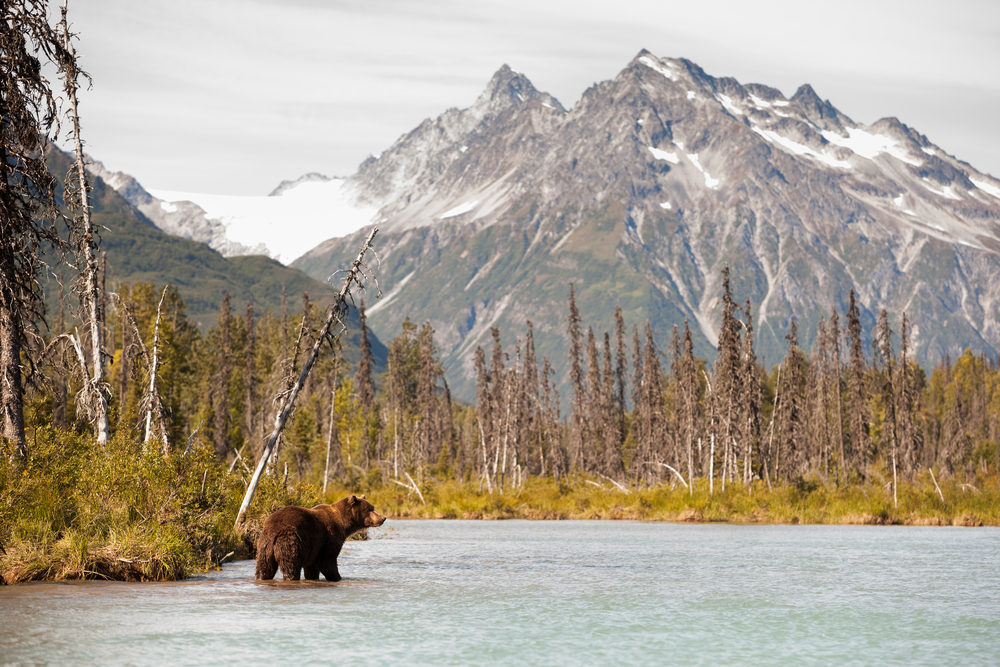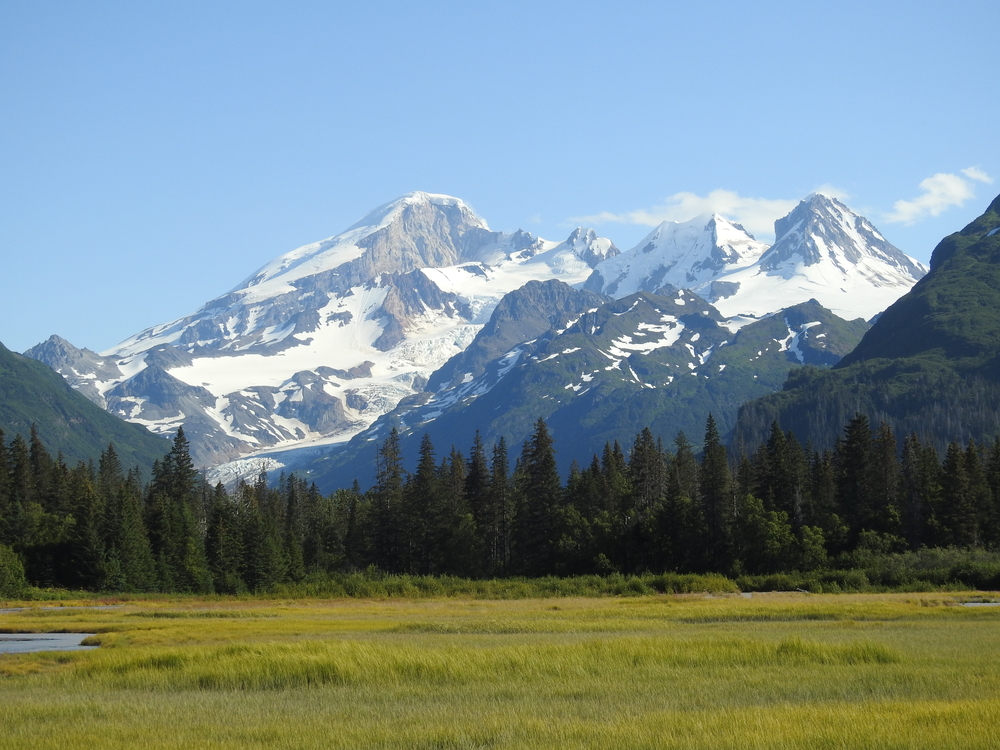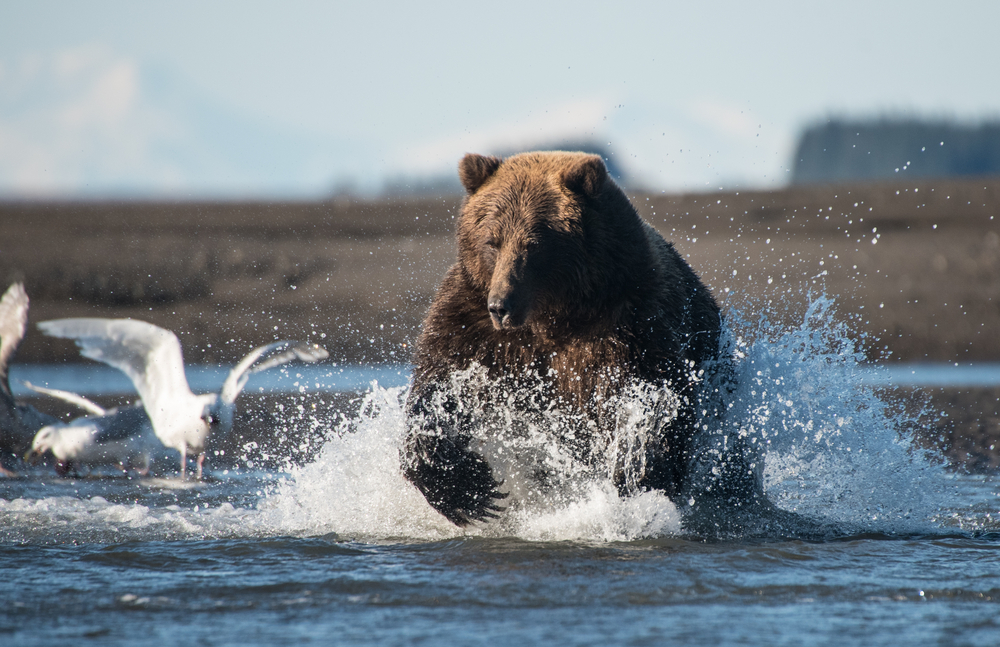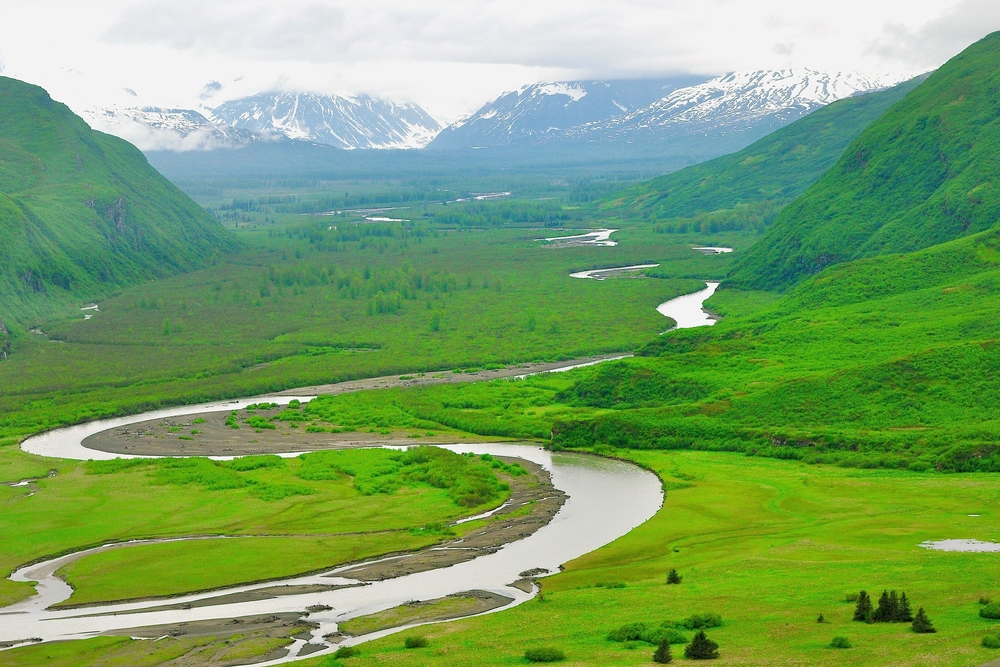Lake Clark National Park is located in the southern part of Alaska, just west of the central point. The park covers an area of 6,296 square miles (16,308 sq km) making it the 6th largest park in Alaska and the 7th largest in the United States.
Lake Clark is one of several lakes and numerous rivers and streams that are located throughout the preserve. These waterways are just some of the many natural facets of the park’s pristine wilderness. Lake Clark is the largest lake in the park and the sixth-largest in Alaska. It expands a distance of 42 miles (68 km) long and reaches a depth of 860 feet (260 m).
The park is comprised of alpine tundra, glaciers, glacial lakes, rainforests, rivers, and volcanoes. Mount Redoubt and Mount Iliamna are the two volcanoes with Redoubt being active. Almost any type of imagined Alaskan terrain is located here in the Lake Clark region.
The diversity of ecosystems means that all of Alaska’s renowned wildlife is found in some parts of the park. The Kvichak River delivers the most populous group of sockeye salmon. Combined with the Kijik River and Silver Salmon Creek, these are some of the best places for watching grizzly bear hunting for salmon. The only place that really competes for bear watching is the neighboring Katmai National Park.
Grizzly bear, black bear, and moose are some of the most popular wildlife sightings while also representing the larger Alaskan species. Other wildlife that may be found in the park includes caribou, coyote, red fox, beaver, lynx, and wolverine.
The powerful golden eagle and majestic bald eagle are some of the bird species that demonstrate their striking beauty across the expansive skies. You will be incredibly impressed if you are fortunate enough to witness one of these majestic birds capturing a salmon or some other prey while in mid-flight.
The national park is in a remote part of Alaska with no roads entering the area. The only way the park may be accessed is by boat or floatplane, which adds to the adventure of travel to Lake Clark National Park.
Photos
Things to See
Lake Clark National Park Trails
There are only two maintained trails in Lake Clark National Park with all other hiking being backcountry.
Sources
- Alaska Magazine, Lake Clark National Park and Preserve, https://www.alaskamagazine.com/travel/places-to-see/lake-clark-national-park-and-preserve/, retrieved June 2020.
- Britannica, Lake Clark National Park, https://www.britannica.com/place/Lake-Clark-National-Park-and-Preserve, retrieved June 2020.
- Britannica, Lake Clark, https://www.britannica.com/place/Lake-Clark-National-Park-and-Preserve, retrieved June 2020.
- Great State of Alaska, Lake Clark National Park and Preserve, https://www.adfg.alaska.gov/index.cfm?adfg=viewinglocations.lakeclark, retrieved June 2020.
- National Geographic, Complete National Parks of the United States, National Geographic Publishing, Washington DC.
- National Geographic, Guide to the National Parks of the United States, National Geographic Society, 2003.
- National Geographic, National Parks of North America, Canada-United States-Mexico, National Geographic Society, 1995.
- National Park Service, Lake Clark, https://www.nps.gov/lacl/index.htm, retrieved June 2020.
- New York Times, An Alaska National Park as Connecticut Annual Visitors? 23,000, https://www.nytimes.com/2018/07/16/travel/lake-clark-national-park-alaska.html, retrieved June 2020.
- Travel Alaska, Lake Clark National Park and Preserve, https://www.travelalaska.com/Destinations/Parks-and-Public-Lands/Lake-Clark-National-Park-and-Preserve.aspx, retrieved June 2020.



